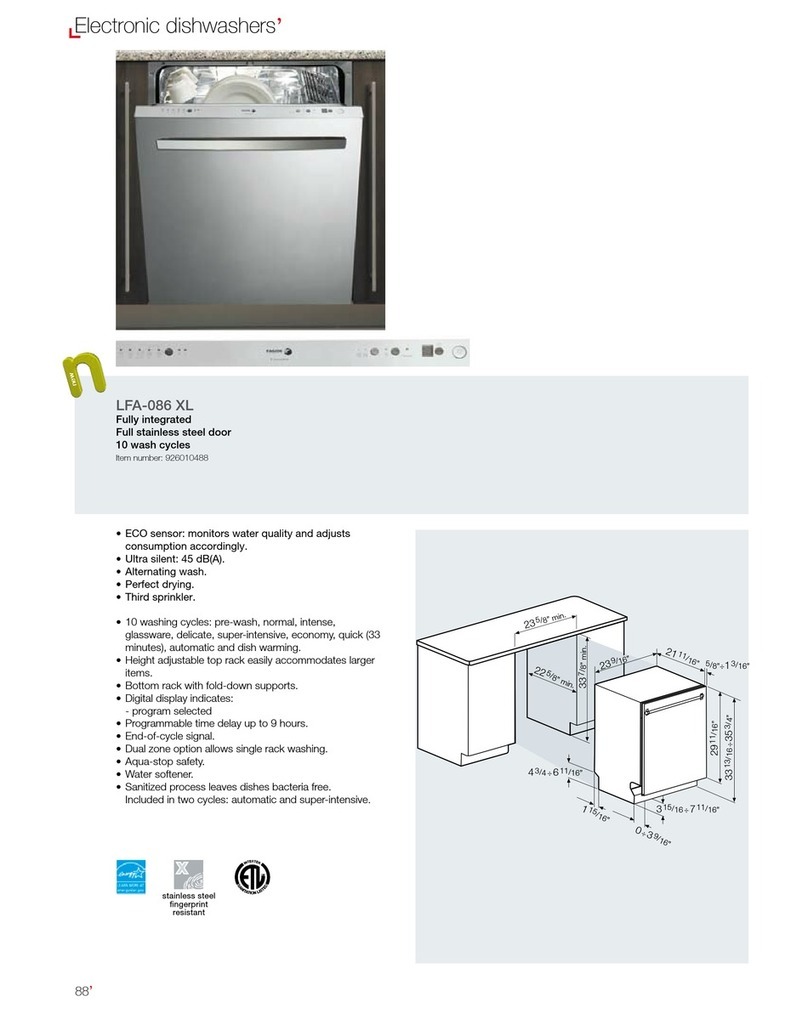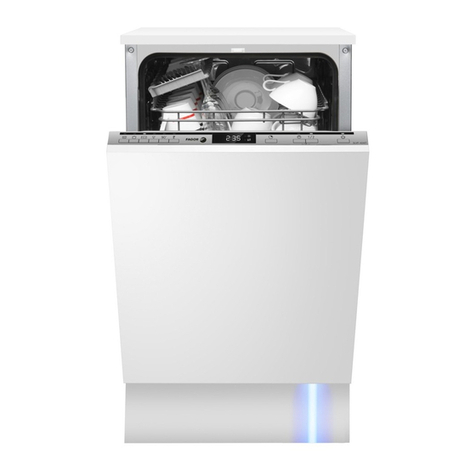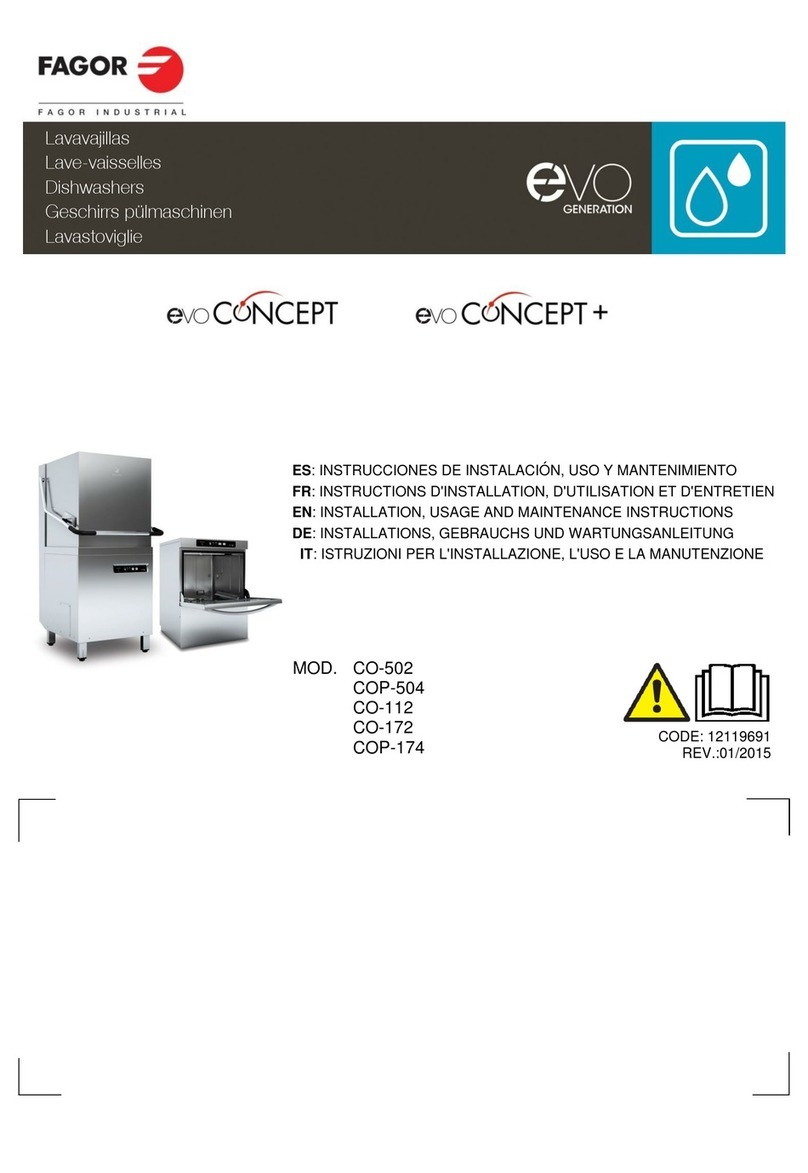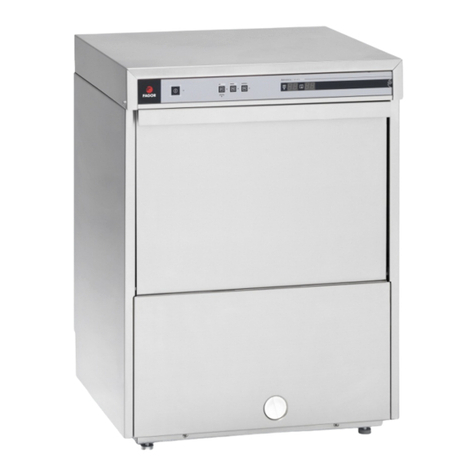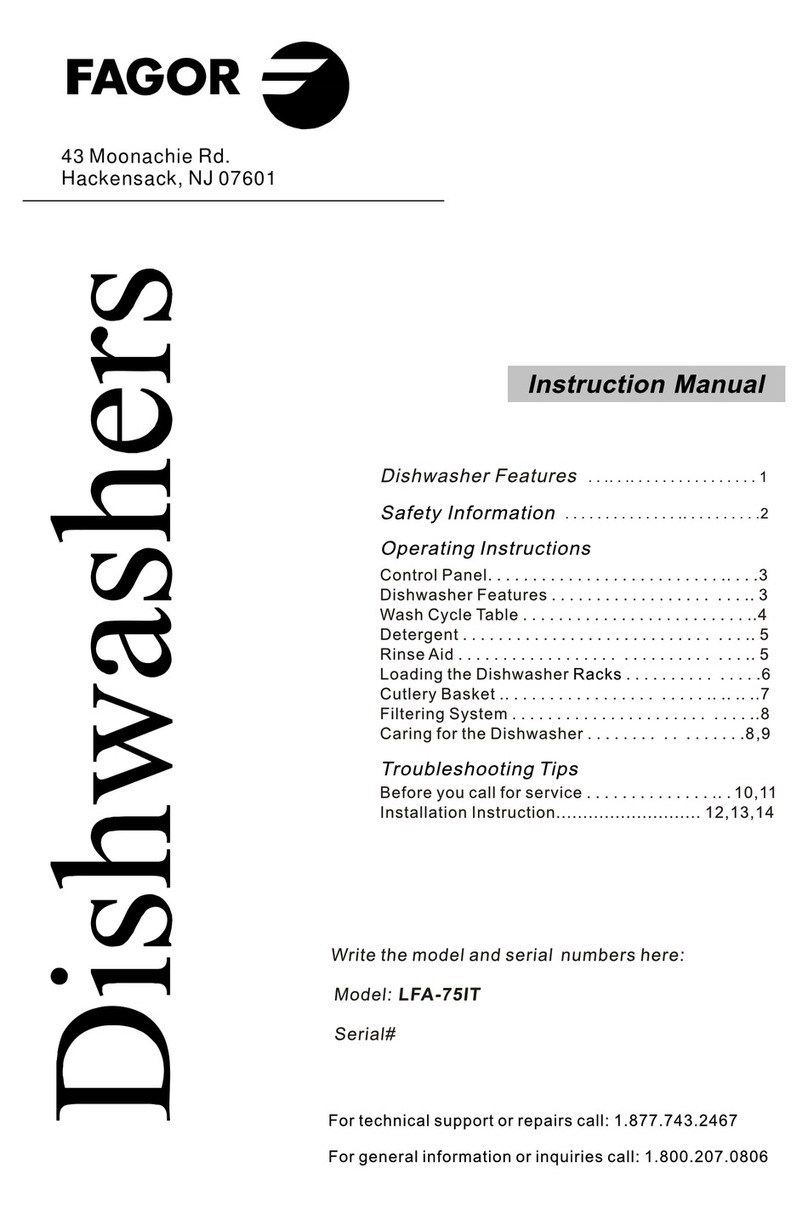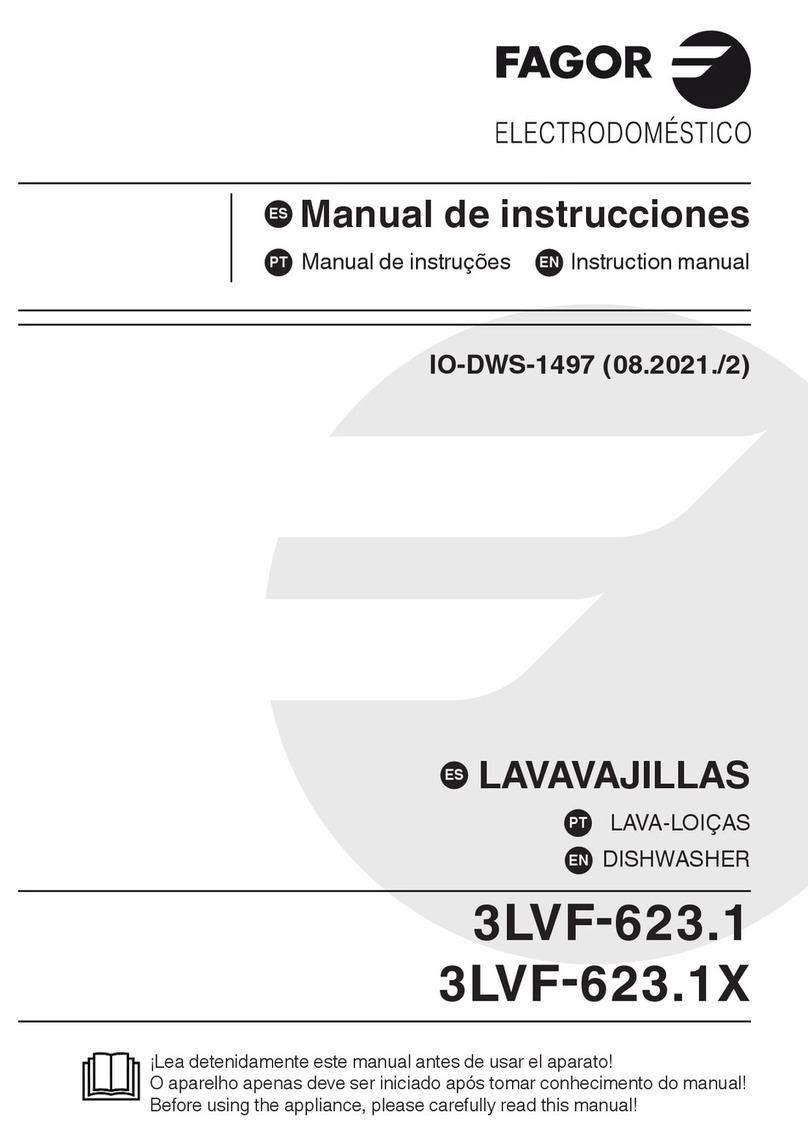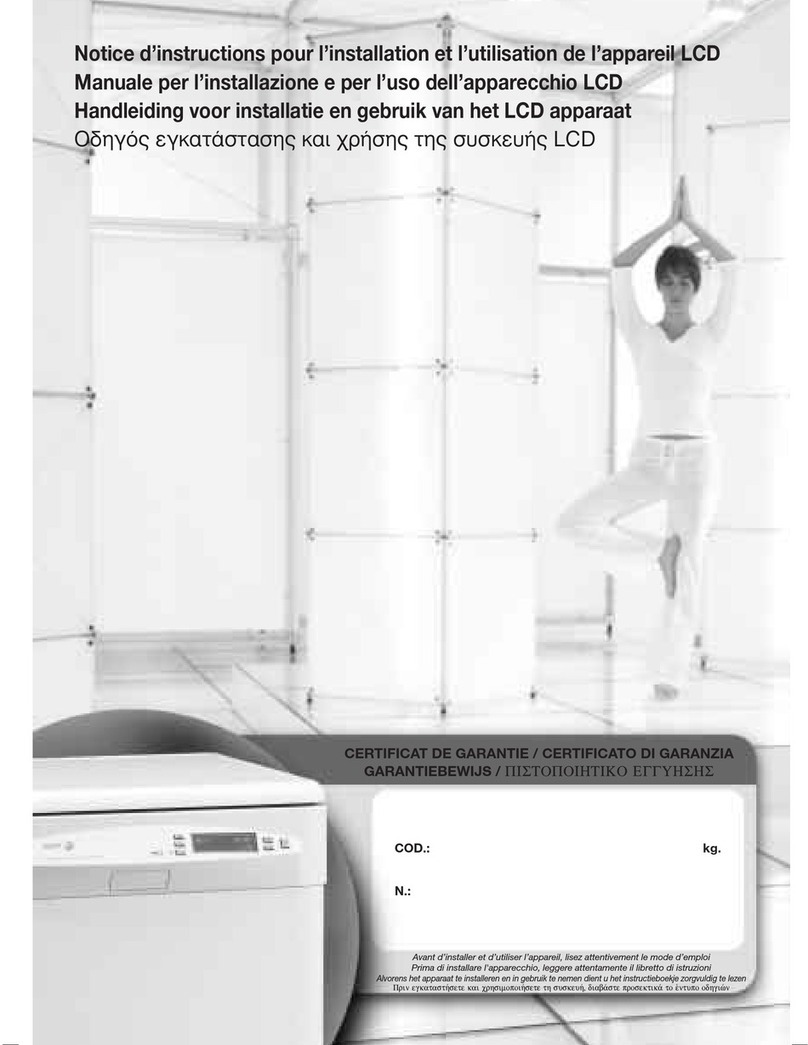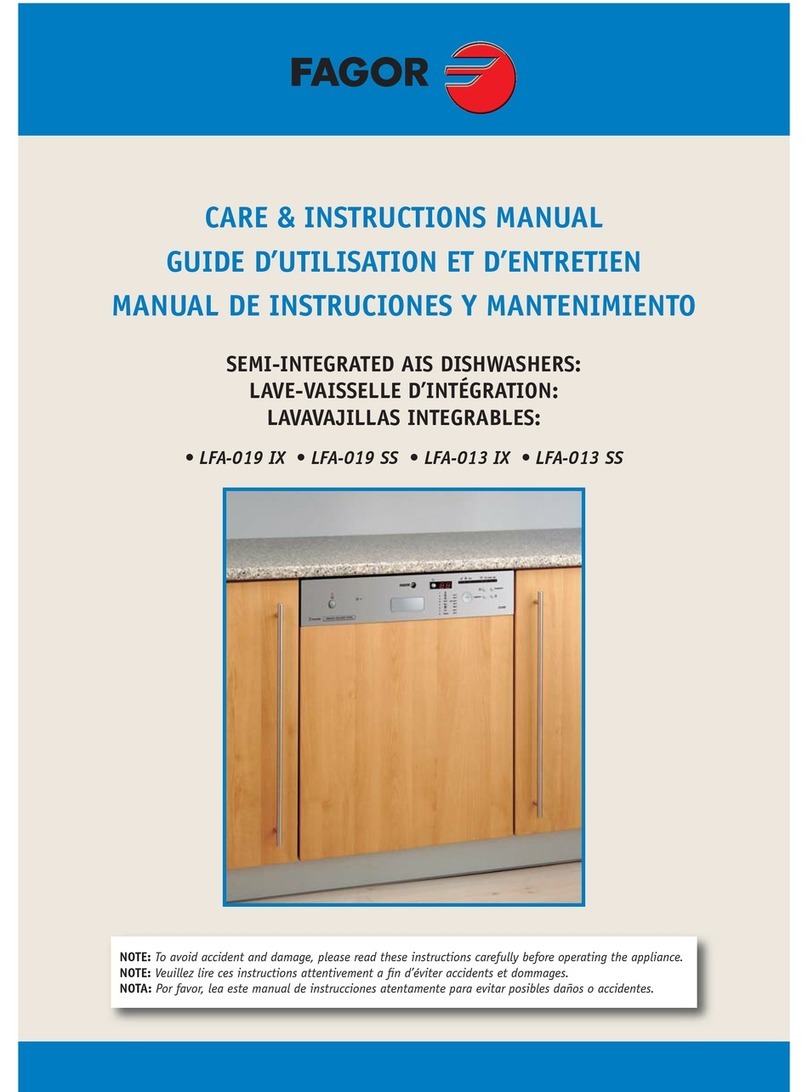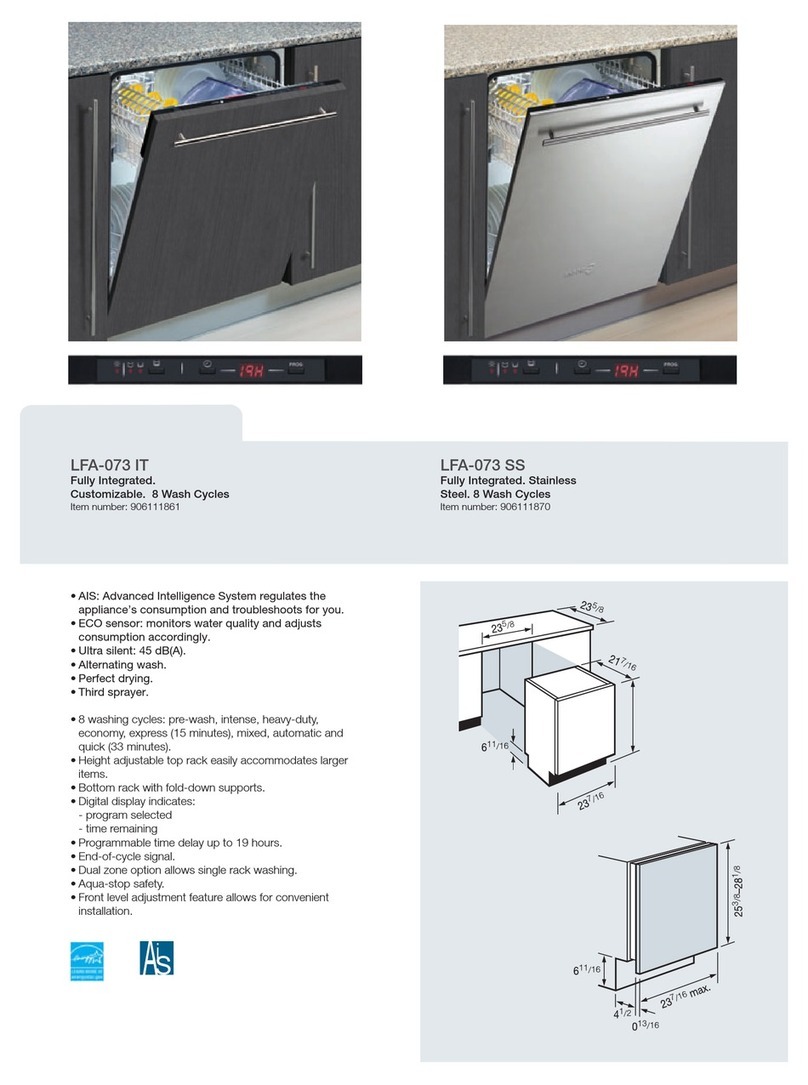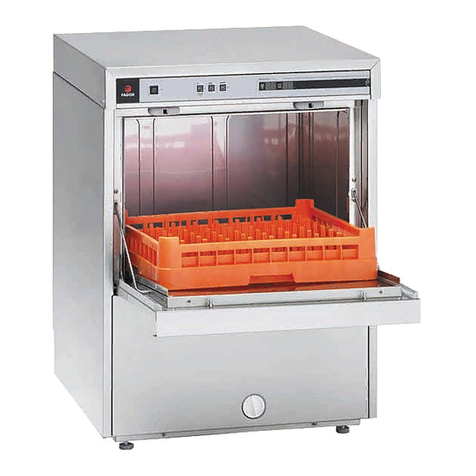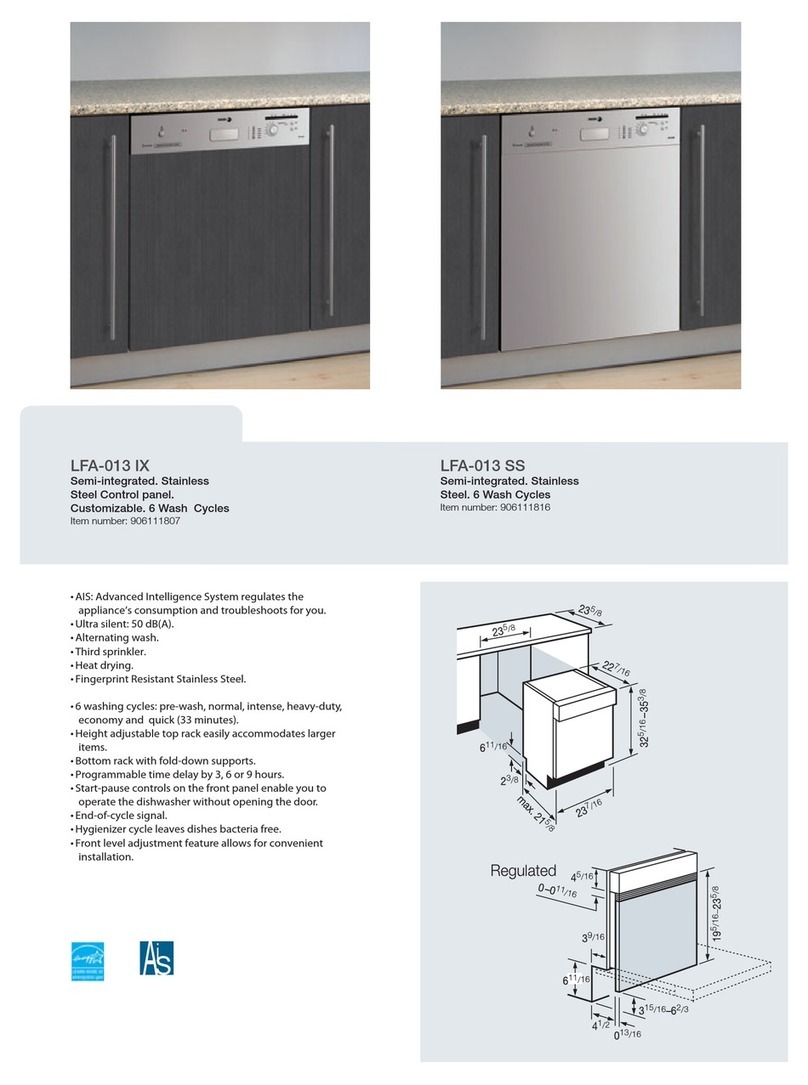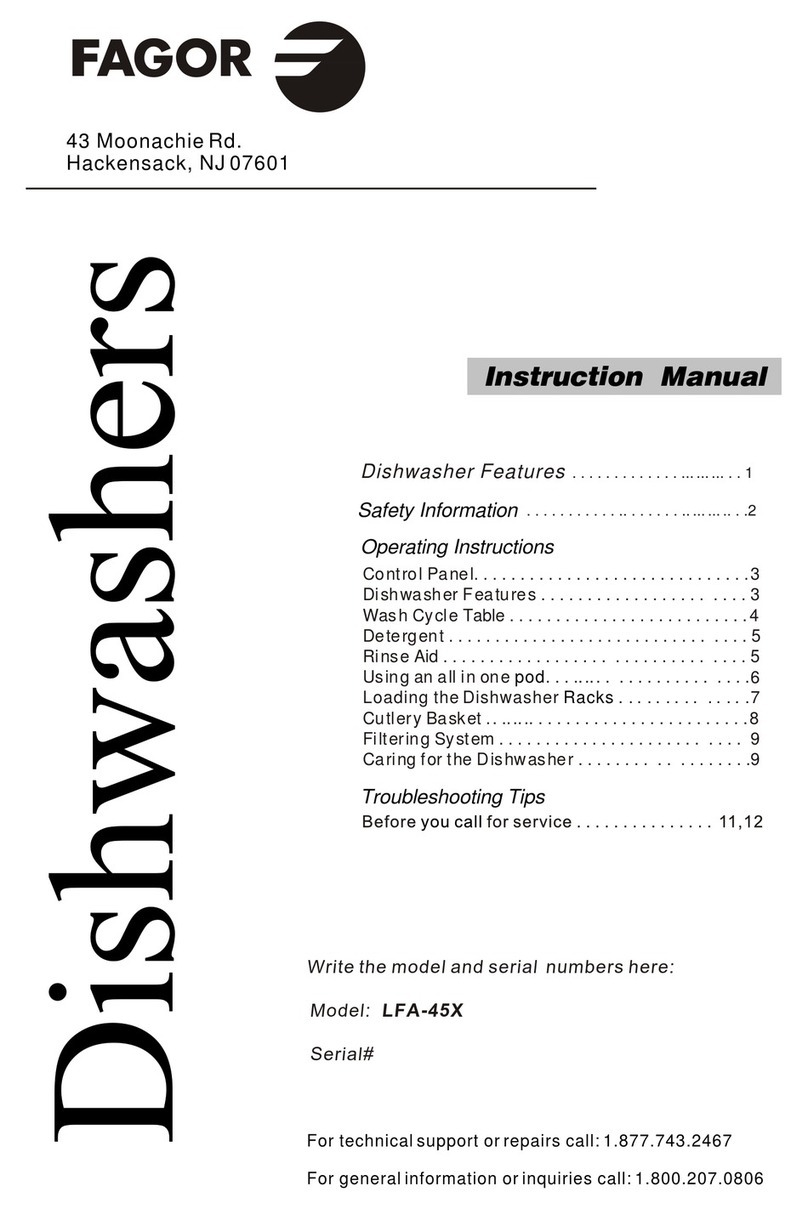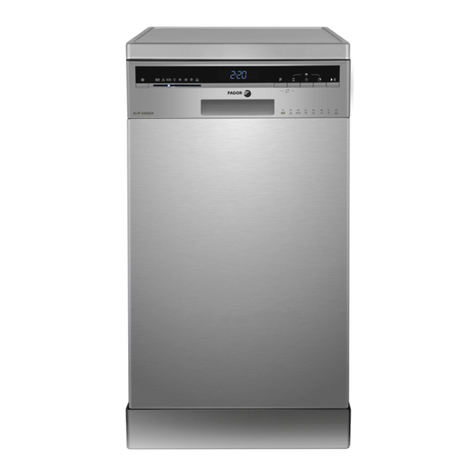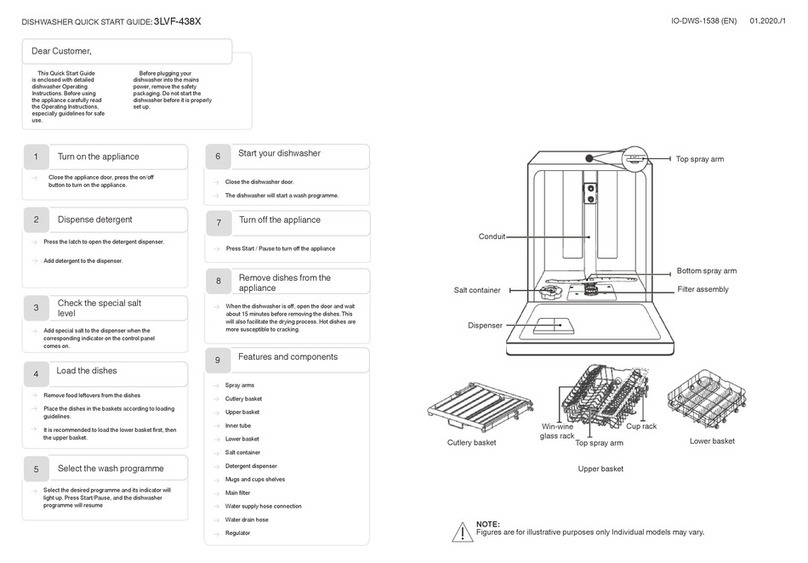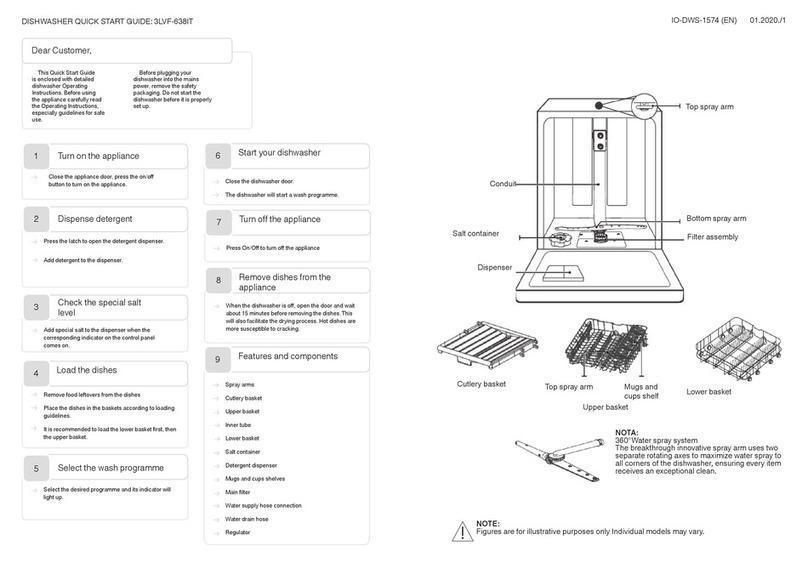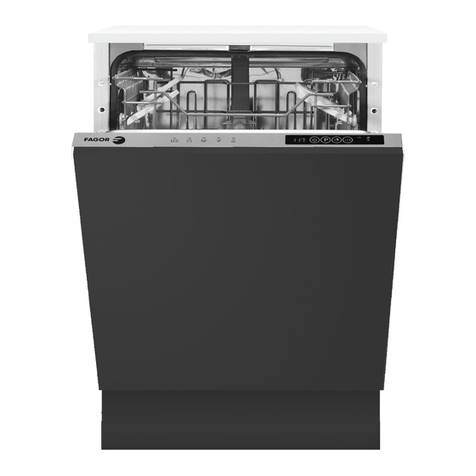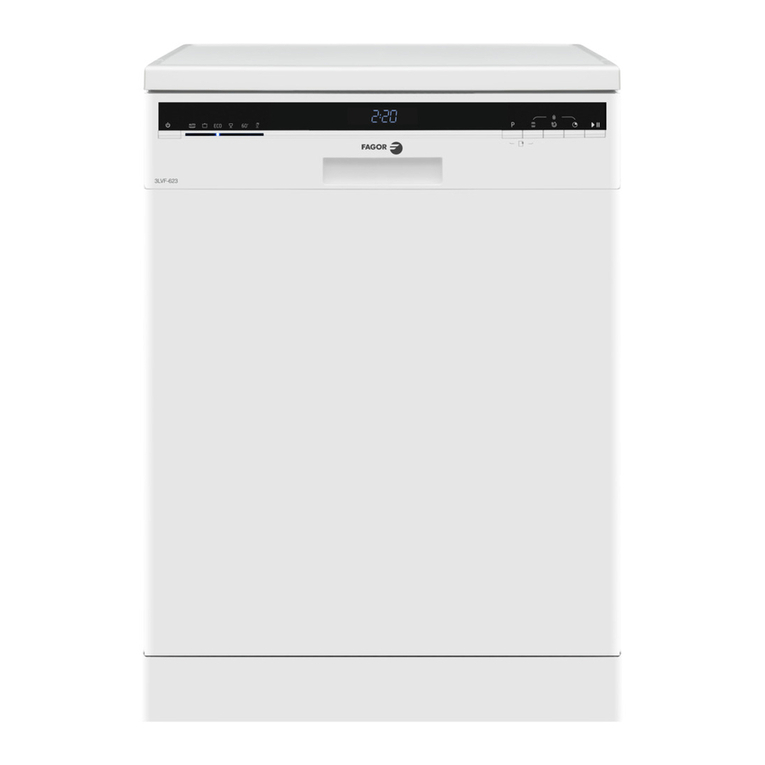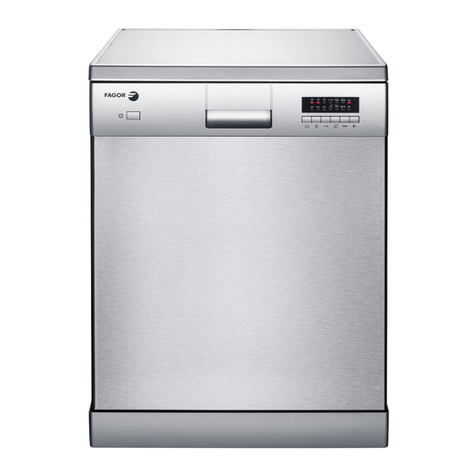4.- MAINTENANCE
4.1 Check the detergent and rinse liquid containers on a daily basis to ensure
levels are sufficient and the filters on the ends of the pipes are fully submerged.
Check pipes leading from the containers for kinks.
4.2 Everyday, clean the suction filter (F on figure 5). To do this, remove the anti-
overflow device (drain plug) in the middle of the suction filter, turn (F) anticlockwise
and lift it up. Use soapy water for cleaning, not abrasive detergents. Never use jets of
water to clean the outside of the machine.
4.3 Check that all parts are securely fixed, in particular that the screws on the wash
and rinse arms have not worked loose.
4.4 If the machine is not going to be used for a long time, cover its surfaces with a
coating of petroleum jelly.
5 ELECTRICAL AND MECHANICAL PROBLEMS – (TROUBLESHOOTING)
The following should be checked before calling for technical service
5.1 If the machine has no power, check if it is plugged in to the power supply and
that the voltage coincides with that required by the machine.
5.2 If the machine has no power, check if the power cord is damaged, in which case
it should be replaced by the manufacturer or by its aftermarket service or by other
qualified personnel in order to prevent hazards.
5.3 If the water connection or the start up take too long check the water supply is
working at the required temperature and that the drain plug has been inserted.
5.4 If the machine is not rinsing or washing properly, check that the arms rotate
properly and the nozzles are not blocked. To remove the rise arm, unscrew the thumb
screw in the central support (using a coin). Wash the rinse arm in soapy water and
reposition. Tighten the screw.
5.5 If the machine is not washing or rinsing properly, check the levels of rinse aid
and detergent and check that the supply pipes are not kinked and do not have an air
bubble blocking them.
5.6 After sales service:
Fagor Australasia Pty. Ltd., 7 Boola Place, Dee Why, NSW.
Tel. 02 9984 7533
